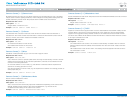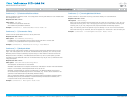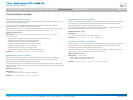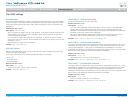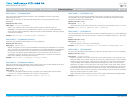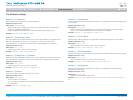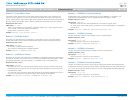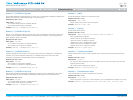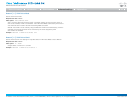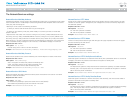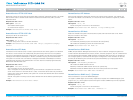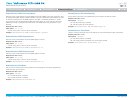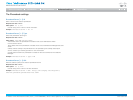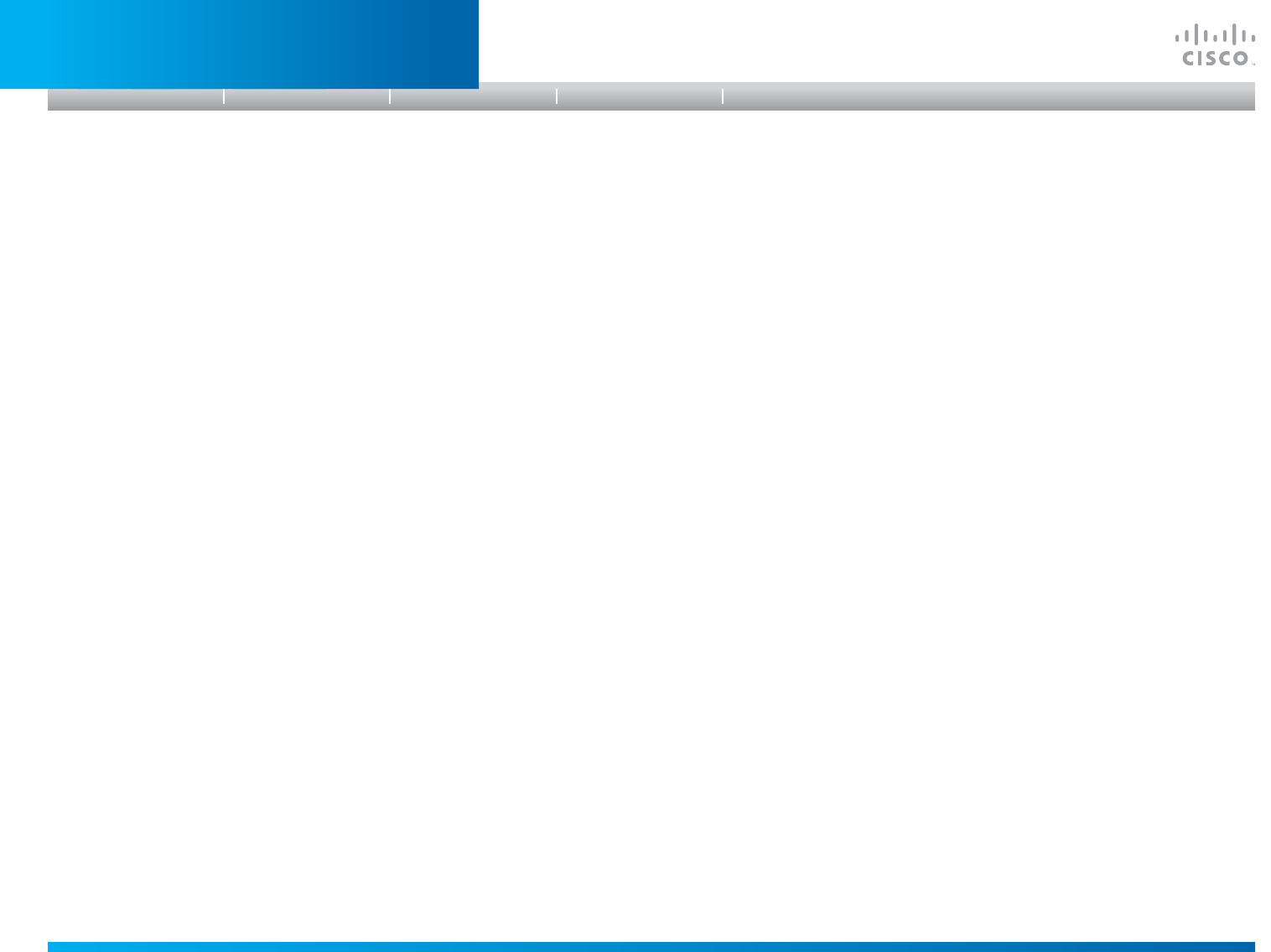
D14908.01 SX20 Administrator Guide (TC5.1) | 2012 FEBRUARY | © 2012 Cisco Systems, Inc. All rights reserved. www.cisco.com
41
Cisco TelePresence SX20 Quick Set
ADMINISTRATOR GUIDE
Network[1..1]IPv6Gateway
Define the IPv6 network gateway address. Only applicable if the Network IPv6 Assignment is set
to Static.
Requiresuserrole: ADMIN
Valuespace: <S: 0, 64>
Format: The IPv6 address of host name.
Example: Network 1 IPv6 Gateway: "ffff:ffff:ffff:ffff:ffff:ffff:ffff:ff
ff"
Network[1..1]IPv6Assignment
Define whether to use Autoconf or Static IPv6 assignment.
Requiresuserrole: ADMIN
Valuespace: <Static/Autoconf>
Static: Set the network assignment to Static and configure the static IPv6 settings (IP Address
and Gateway).
Autoconf: Enable IPv6 stateless autoconfiguration of the IPv6 network interface. See
RFC4862 for a detailed description.
Example: Network 1 IPv6 Assignment: Autoconf
Network[1..1]IPv6DHCPOptions
Retrieves a set of DHCP options from a DHCPv6 server.
Requiresuserrole: ADMIN
Valuespace: <On/Off>
On: Enable the retrieval of a selected set of DHCP options from a DHCPv6 server.
Off: Set to Off when IPv6 Assignment is set to Static.
Example: Network 1 IPv6 Gateway: On
Network[1..1]QoSMode
The QoS (Quality of Service) is a method which handles the priority of audio, video and data in
the network. The QoS settings must be supported by the infrastructure. Diffserv (Differentiated
Services) is a computer networking architecture that specifies a simple, scalable and coarse-
grained mechanism for classifying, managing network traffic and providing QoS priorities on
modern IP networks.
Requiresuserrole: ADMIN
Valuespace: <Off/Diffserv>
Off: No QoS method is used.
Diffserv: When you set the QoS Mode to Diffserv you must configure the Diffserv sub menu
settings (Audio, Data, Signalling and Video).
Example: Network 1 QoS Mode: diffserv
Network[1..1]QoSDiffservAudio
The Diffserv Audio defines which priority Audio packets should have in an IP network. Enter
a priority, which ranges from 0 to 63 for the packets. The higher the number, the higher the
priority. These priorities might be overridden when packets are leaving the network controlled by
the local network administrator. NOTE: Requires the Network QoS Mode to be set to Diffserv.
Requiresuserrole: ADMIN
Valuespace: <0..63>
Audio: A recommended value is Diffserv Code Point (DSCP) AF41, which equals the value
34. If in doubt, contact your network administrator.
Range: Select a value from 0 to 63.
Example: Network 1 QoS Diffserv Audio: 0
Network[1..1]QoSDiffservData
The Diffserv Data defines which priority Data packets should have in an IP network. Enter a
priority, which ranges from 0 to 63 for the packets. The higher the number, the higher the
priority. These priorities might be overridden when packets are leaving the network controlled by
the local network administrator. NOTE: Requires the Network QoS Mode to be set to Diffserv.
Requiresuserrole: ADMIN
Valuespace: <0..63>
Data: A recommended value is Diffserv Code Point (DSCP) AF23, which equals the value 22.
If in doubt, contact your network administrator.
Range: Select a value from 0 to 63.
Example: Network 1 QoS Diffserv Data: 0
Network[1..1]QoSDiffservSignalling
The Diffserv Signalling defines which priority Signalling packets should have in an IP network.
Enter a priority, which ranges from 0 to 63 for the packets. The higher the number, the higher the
priority. These priorities might be overridden when packets are leaving the network controlled by
the local network administrator. NOTE: Requires the Network QoS Mode to be set to Diffserv.
Requiresuserrole: ADMIN
Valuespace: <0..63>
Signalling: A recommended value is Diffserv Code Point (DSCP) AF31, which equals the value
26. If in doubt, contact your network administrator.
Range: Select a value from 0 to 63.
Example: Network 1 QoS Diffserv Signalling: 0
Introduction
Table of contents
Web interface
Advanced settings
Appendices
Advanced settings



